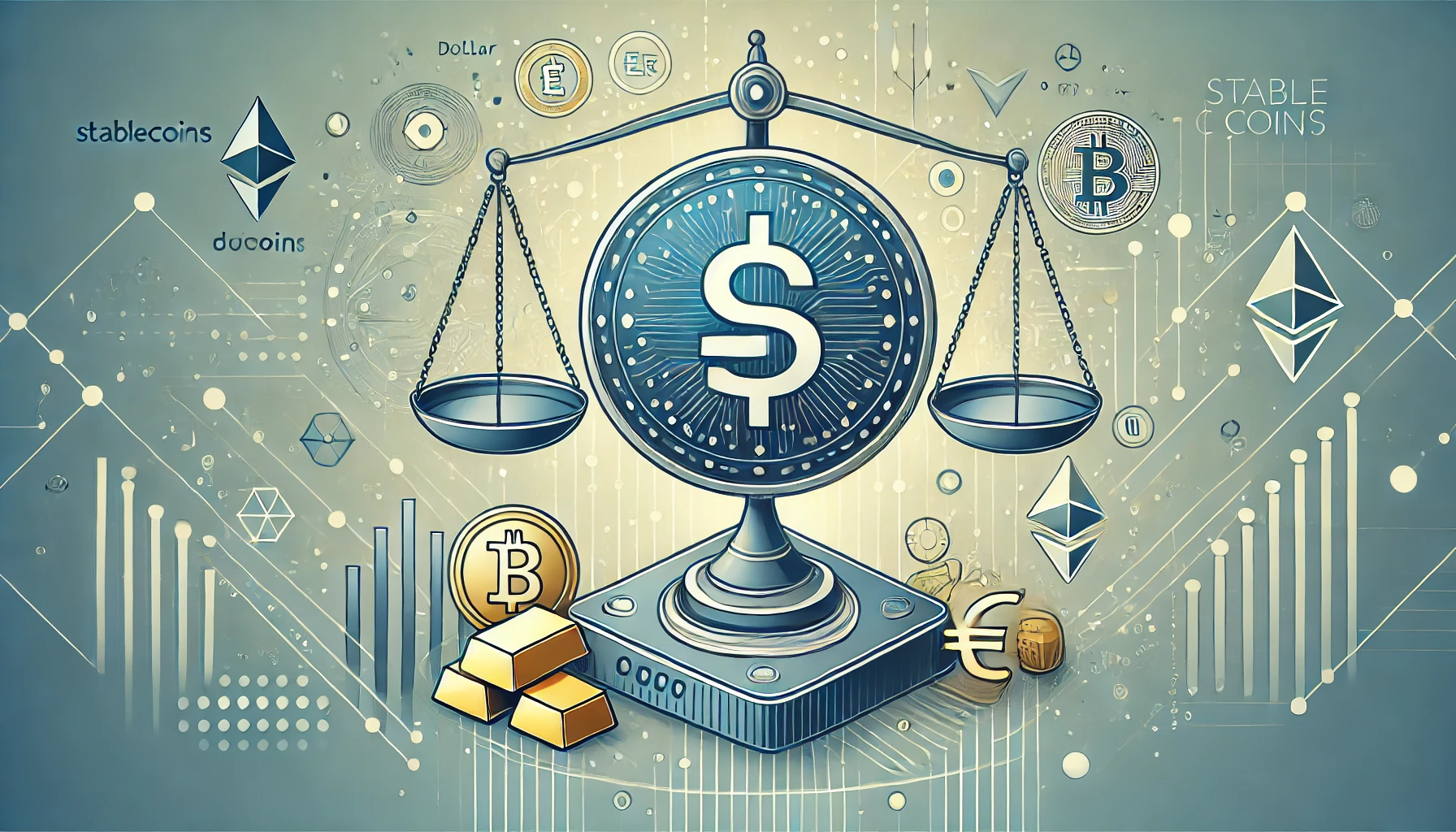Understanding Stablecoins: A Beginner's Guide
In the world of cryptocurrencies, stablecoins have become a crucial tool. While Bitcoin, Ethereum, and other cryptocurrencies are known for their price volatility, stablecoins aim to offer something different — stability. But what exactly are stablecoins, and how do they work? Let’s dive in to understand them better.
What Are Stablecoins?
Stablecoins are a type of cryptocurrency designed to maintain a stable value. Unlike Bitcoin or other digital currencies, which can fluctuate wildly in price, stablecoins are tied to the value of a stable asset, such as:
Fiat currencies (like the US Dollar, Euro, or Indian Rupee)
Commodities (like gold or silver)
Other cryptocurrencies or a combination of assets
By being pegged to these assets, stablecoins provide the benefits of cryptocurrency—such as fast transactions and lower fees—without the unpredictability of price swings.
Why Are Stablecoins Important?
The main purpose of stablecoins is to bring stability to the otherwise volatile crypto market. Here are some reasons why they are important:
Ease of Transactions: You can use stablecoins for quick and cost-effective transactions without worrying about fluctuating values.
Hedging Against Volatility: Investors use stablecoins to protect their investments during market downturns.
Global Reach: Stablecoins can be sent or received across borders quickly, making them ideal for international remittances.
Bridging Traditional and Crypto Worlds: Stablecoins link traditional financial systems with blockchain technology, making crypto more accessible.
Types of Stablecoins
There are three primary types of stablecoins:
Fiat-Backed Stablecoins: These are backed by reserves of fiat currency, like the US Dollar. For every stablecoin issued, an equivalent amount of fiat currency is kept in reserve. Examples include:
Tether (USDT): Pegged to the US Dollar, Tether is one of the most popular stablecoins.
USD Coin (USDC): Another widely-used stablecoin backed 1:1 by the US Dollar.
Commodity-Backed Stablecoins: These are tied to the value of physical assets like gold, silver, or oil. Examples include:
Paxos Gold (PAXG): Backed by gold reserves.
Algorithmic Stablecoins: These use algorithms and smart contracts to maintain stability without needing reserves. The supply of coins is adjusted automatically based on demand. Examples include:
TerraUSD (UST): Operates through a system of supply and demand, though it has faced challenges in maintaining stability.
How Do Stablecoins Work?
To understand how stablecoins maintain their value, let’s look at an example of a fiat-backed stablecoin, such as USDC:
Backing with Reserves: For every USDC in circulation, there is an equivalent US Dollar stored in a bank account or reserve.
Issuance and Redemption: If you want to buy USDC, you send $1 to the issuer, and they give you 1 USDC. If you want to redeem it, you return the USDC, and the issuer gives you $1 back.
For algorithmic stablecoins, the process is slightly different. These coins rely on smart contracts that automatically adjust the coin’s supply to keep its price stable.
Benefits of Stablecoins
Fast and Low-Cost Transfers: Transactions are quick and cost-effective, especially for international payments.
Decentralized Finance (DeFi): Stablecoins are integral to DeFi platforms, where users can earn interest, take loans, or provide liquidity.
Accessibility: They make cryptocurrencies more accessible to everyday users who may not want to deal with price volatility.
Risks and Challenges
While stablecoins offer several advantages, they also come with risks:
Regulatory Concerns: Governments are scrutinizing stablecoins for their potential impact on monetary systems.
Centralization: Fiat-backed stablecoins often rely on centralized entities, which may contradict the decentralized nature of cryptocurrencies.
Risk of Depegging: In rare cases, stablecoins can lose their peg to the underlying asset, leading to instability.
Real-Life Examples
Cross-Border Payments: Stablecoins like USDC are used by individuals and businesses for fast, low-cost international transfers.
Savings and Investments: Users can park their funds in stablecoins during crypto market downturns.
DeFi Platforms: Platforms like Aave and Compound use stablecoins for lending and borrowing.
Conclusion
Stablecoins are a vital part of the cryptocurrency ecosystem, offering the benefits of digital assets while minimizing price volatility. As the technology evolves, they are likely to play an even bigger role in global finance, bridging the gap between traditional currencies and blockchain-based systems. Whether you are a crypto enthusiast or a newcomer, understanding stablecoins is essential to navigating the future of finance.






